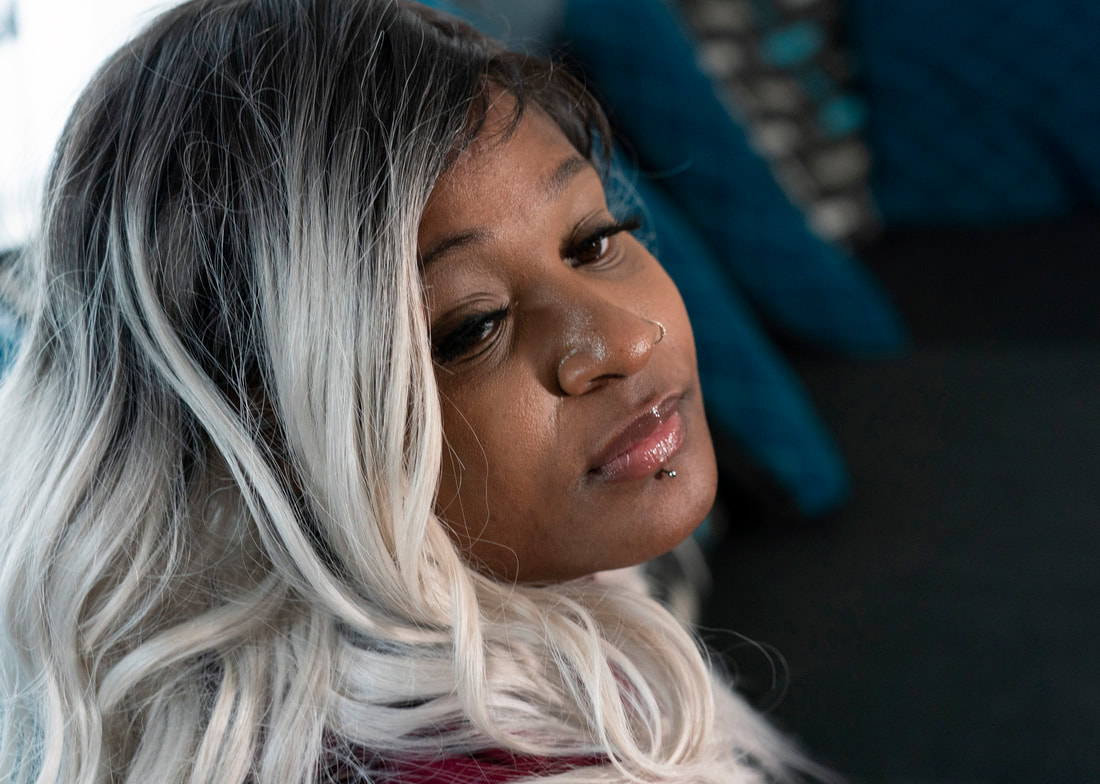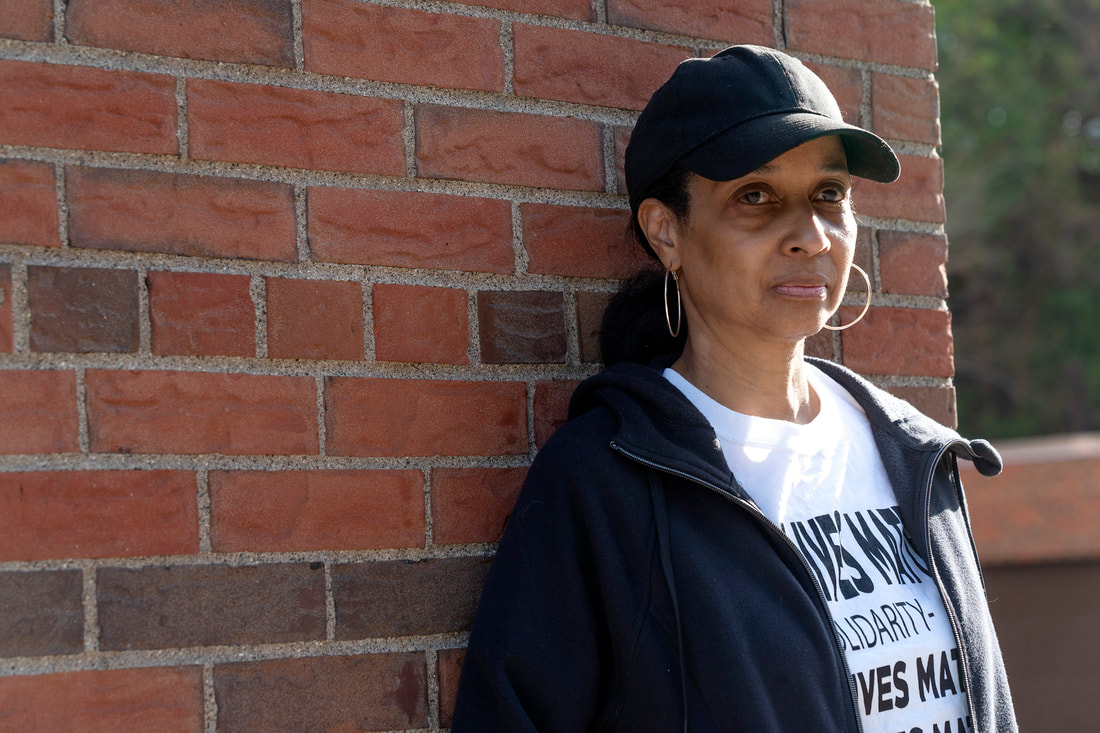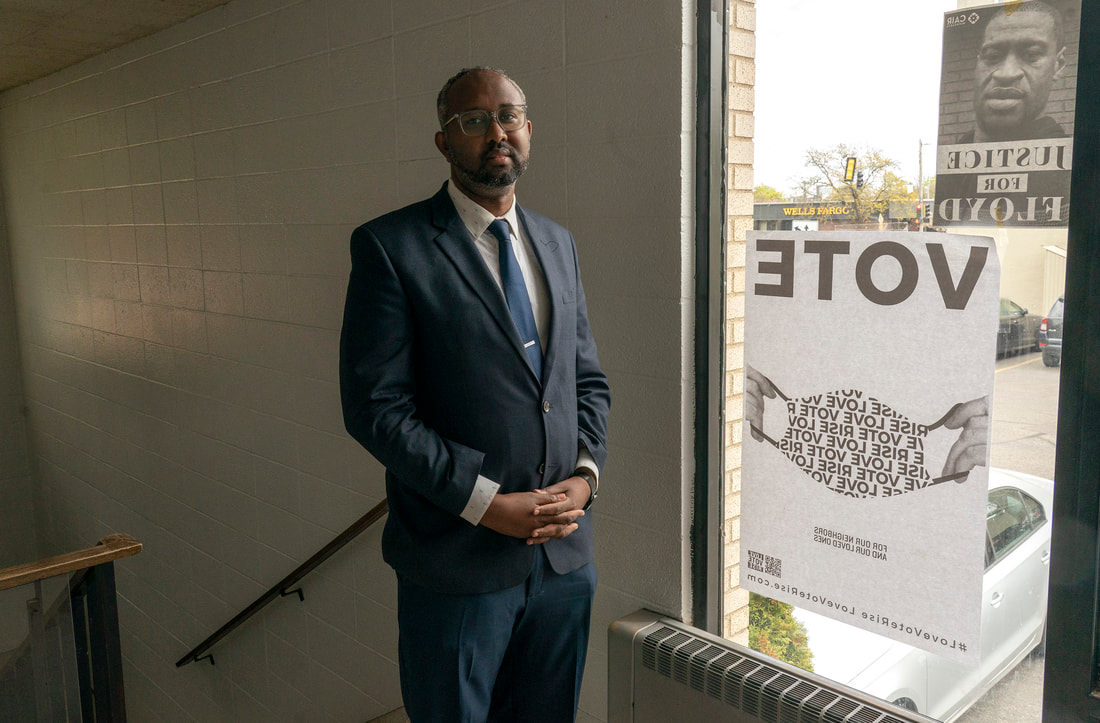|
Ahead of the one-year anniversary of George Floyd’s murder, I traveled to Minnesota to connect with community members across the Twin Cities who shared how the region has changed.
MAPLEWOOD, MN — Since losing her fiancé in 2009, Toshira Garraway Allen has dedicated her entire life to helping those affected by police violence. Ahead of the one-year anniversary of the murder of George Floyd in Minneapolis, Allen has focused on amplifying the stories of those who can no longer speak for themselves. “I believe in my heart that it's time for all of the stories of all of the people who have been killed by racially motivated murders to stand up and come forward,” Allen told Yahoo News in a sitdown interview in her home. “That's why I fight.” As the founder of Families Supporting Families Against Police Violence, Allen helps families who have lost loved ones to police violence heal their “mind, body and soul,” according to their website. Personally, Allen is no stranger to death. Her fiancé, Justin Teigen, was found dead in a dumpster on August 19, 2009 after being chased by police following a traffic stop. Allen contends a coverup, while police say there was no foul play involved. According to Allen, police chased and caught Teigen, beat him up, had canine dogs viciously bite Teigen and then left his body to be crushed in the dumpster. “When we walked into the mortuary, that's where we saw that it was a clear beating that took place,” Allen said. “Justin had dog bites all over his body. His skull was cracked in half. His wrists were detached from his arms. And you could see where you had the handcuff marks.” “It was literally a 2009 Emmitt Till,” she added. But St. Paul Police refute these allegations altogether. Instead, they claim they did everything in their power to “keep the community safe.” “Unfortunately, the combination of acute alcohol intoxication, a head injury sustained after crashing a vehicle while fleeing police, and asphyxia due to mechanical compression in a recycling truck proved tragic,” St. Paul police spokesperson Steve Linders told Yahoo News in an email. “We wish he hadn’t hid from officers and that we could have located him so that we could have gotten him the help he needed.” The differences between the police report and the marks on Teigen’s body don’t add up for Allen. She draws particular connection with what happened to George Floyd on video versus what police said in their initial report, which noted that Floyd died from a "medical incident during police interaction". Allen believes the same kind of coverup is at play with her fiancé. “I've prayed for 11 years for the truth to come out,” she said. “Once they murdered Justin, I got out as a young girl, I was only 23 years old. I was being followed. I was being harassed. I was being stalked by the police because I wanted answers and I was seeking those answers like anybody would do that loves somebody. I did it for my son.” “When I saw them kill George Floyd in broad daylight … I felt that the truth would one day come out and it finally did -- the truth of what they have been doing to Black men,” she added. “They couldn't cover it up because he did it in broad daylight.”
3 Comments
George Floyd’s murder renewed woman’s drive to seek justice for nephew killed by St. Paul police8/21/2021
Ahead of the one-year anniversary of George Floyd’s murder, I traveled to Minnesota to connect with community members across the Twin Cities who shared how the region has changed.
ST. PAUL, Minn. — In 2015, 24-year-old Marcus Golden was shot and killed by police in the parking lot of an apartment building. Police maintain that Golden put the responding officers in a compromising position that required the use of lethal force, but Golden’s family believes the story of his death doesn’t add up. One year removed from George Floyd’s murder in nearby Minneapolis, Golden’s aunt and local Black Lives Matter leader, Monique Cullars-Doty, says the coverup officers tried in Floyd’s death feels reminiscent of the same thing that happened to her nephew over half a decade ago. “There was no actual video tape of the incident that we're aware of,” Cullars-Doty told Yahoo News in a sitdown interview in the East University Avenue apartment building parking lot that her nephew was killed. “And so if you look up Marcus Golden, pretty much everything you're going to find has been manipulated or just complete lies by the St. Paul Police Department.” The details surrounding Golden’s death remain unclear. On Jan. 14, 2015, police were called to the apartment building of Golden’s ex-girlfriend, where Golden had allegedly been making threats through text messages. Upon arriving at the scene, two officers observed Golden in his car and then varying accounts began to differ. Golden’s aunt, Cullars-Doty, says that an eye-witness claimed that one officer slipped on snow and ice on the ground at the scene and his gun went off and the second officer shot at Golden, thinking a shootout was ensuing. St. Paul police, however, claim that they shot at Golden after he drove his car at them at a high speed. Golden was shot in the back of the head and arm by police, but was never taken to the hospital, despite the Trauma Center at Regions Hospital sitting just a few hundred yards away. Four months after the shooting, a grand jury declined to charge the officers, saying the shooting was justified. The St. Paul Police Department believe that they did everything they could to save Golden’s life and say if he made a different decision that night then he “may still be here today.” “Every loss of life is a tragedy, and we understand the families’ anguish over the death of their loved ones,” St. Paul police spokesperson Steve Linders told Yahoo News in an email. “Mr. Golden’s case is no less tragic. The thorough investigation showed that he recklessly placed officers’ lives in danger by driving at them. It also demonstrates that officers do not choose these situations; the situations choose them. We respect the grand jury's decision in this case and continue to keep everyone whose life was changed by this incident—Mr. Golden’s loved ones, our officers and their families—in our prayers.” Immediately following the shooting, no gun was recovered at the scene, according to initial police reports obtained by Yahoo News. But almost 12 hours later, police said they had discovered a gun that was legally registered to Golden. Cullars-Doty alleges foul play on behalf of the police. “The police got a search warrant for my parents’ house where Marcus had been staying and also for Marcus's vehicle, but they didn't search Marcus's vehicle until after they left my parents' house because they retrieved a gun that Marcus legally owned,” Cullars-Doty said, adding that police built a false narrative for Golden in an attempt to damage his character to the public. “[Police] really worked hard to try and bury Marcus in lies, but we buried him in love and we continue to stand up for him and to tell his truth,” she added. The murder of George Floyd in nearby Minneapolis has reignited Cullars-Doty’s pursuit for justice. In January, Cullars-Doty, along with Golden’s mother and grandmother, filed a federal lawsuit against the St. Paul Police Department before the statute of limitations was set to expire. The lawsuit alleges that officers Jeremy Doverspike and Dan Peck used excessive force in violation of Golden's constitutional rights. “George Floyd wraps into everyone just as Marcus wraps into everyone before him because it was these people that died before [Floyd], that Black Lives Matter had been created for,” Cullars-Doty said. Ahead of the one-year anniversary, Collars-Doty believes that Floyd’s death has shown the world the ugly truth about police brutality. “George Floyd has energized the entire world and the country,” she said. “He’s caused people to move who would not move and pushed people who said, ‘I don't get it’ all of a sudden began to get it. But it also still showed us that there's a lot of ignorant people still in the world.”
Ahead of the one-year anniversary of George Floyd’s murder, I traveled to Minnesota to connect with community members across the Twin Cities who shared how the region has changed.
MINNEAPOLIS — Jaylani Hussein, the executive director of the Minnesota chapter of the Council on American-Islamic Relations, was 11 years old when he and his family immigrated to the state from Somalia in 1994. Nearly 30 years later, and on the precipice of the one-year anniversary of the murder of George Floyd, Hussein reflected on how he and tens of thousands of other Somalians have, despite their efforts to fit in, often felt pushed aside. “The Somali community in Minnesota is the poorest community with the lowest home ownership,” Hussein told Yahoo News in an interview in his Minneapolis office. “But it's a community that also is giving this state its economic prosperity because all of those low-skilled jobs in the state of Minnesota are all from immigrants, Somalis and Latinos. The net gain for Minnesota in the last decade has been from immigrant families who have called this place home.” Hussein’s family, like thousands of other Somalians in the early 90s, came to the Twin Cities (the neighboring communities of Minneapolis and St. Paul) to escape persecution as a civil war raged in their homeland. Despite finding a safe haven, the cultural transition has not always been easy. “Minnesota was one of the whitest states in the union in the 90s, and so therefore really a place that was a little bit of an oddity,” Hussein said. “It was also a very cold place … but really Minnesota started to become home for many of us because of the opportunities that it presented.” Minnesota is now home to the country’s largest Somali-American population, and 75percent of the 80,000 Somali immigrants in the state live in the Twin Cities. While Somalian refugees were sent all over the U.S. in the early 90s and 2000s through refugee programs, those who settled in Minnesota began to tell others about the opportunities for jobs, proximity to family and support from local agencies. Soon, more came. But the initial prosperity many immigrants found has had limits. Sixty-five percent of Somali-American households in Minnesota have an income less than $35,000 a year. As CAIR’s executive director, Hussein is one of the most prominent advocates for the Muslim and Somali communities in the Twin Cities. In his role he works to enhance the community’s understanding of Islam, the religion the majority of the Somali population practice, in addition to “empowering the community for a more just society.” Hussein says that Somali-Americans, who are by and large Black, Muslim and poor, face discrimination on a number of fronts. Over the last year, with the high-profile killings over the past year of Floyd and 20-year-old Duante Wright, Hussein has spent the bulk of his time focussing on police brutality and the killings of Black men by law enforcement in the area. “George Floyd gave many Americans, who have ignored us for so long, [an opportunity] to finally see a glimpse of the injustice that is happening in this country,” Hussein said. “And I just hope and pray that they did not compartmentalize that and did not see the system that continues to recreate that.” “In the most ironic and painful way Duante Wright was killed as this [former Minneapolis police officer Derek Chauvin’s] was ending,” he added. “I feel like it's a sign to say that the work was never over.” |
Marquise Francislives by one word: achievement. in anything and everything, achieve. Archives
August 2021
Categories
All
|




 RSS Feed
RSS Feed